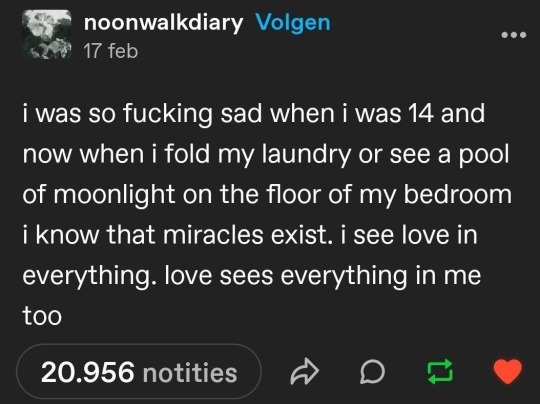#optimates
Explore tagged Tumblr posts
Text
29 notes
·
View notes
Text

Scipio and his goth gf.
32 notes
·
View notes
Text







Did u get my vibes man?
#hopecore#hope punk#webweaving#words#quotes#poetry#art#on humanity#on the human condition#comfort#comfort core#beautiful#love#optimism#joyful whimsy#joyful whimsy tag#humanity#on humanity and love#recovery#web weaving#girlhood#love letters#hopepunk#text#no credits don’t panic
13K notes
·
View notes
Text
“Best” Versus Populists, Roman Optimates Vs Populares: An Old Story, Now As It Was 21 Centuries Ago
The eternal retun of the same plutocratic phenomenon: want to forget about the absurdity of life? The hate, it will be overwhelming…Optimates Vs Populares are a warning about the hate that is piling up today from those who control the media… Optimates were a political grouping in the late Roman Republic that emerged from conflicts between the senate and the Populares, a grouping that sided with…

View On WordPress
0 notes
Text
Amazon deforestation fell over 50% in 2023 and as of August 2024 it was 46% lower than this time last year.
The Brazilian government has pledged to end Amazon deforestation entirely by 2030 and their current efforts have deforestation approaching the lowest it has been in the last six years.
#amazon rainforest#rainforest#rainforest conservation#conservation#forest conservation#good news#hope#climate change#environment#climate anxiety#ecoanxiety#hopepunk#positive news#climate optimism
6K notes
·
View notes
Text
"With “green corridors” that mimic the natural forest, the Colombian city is driving down temperatures — and could become five degrees cooler over the next few decades.
In the face of a rapidly heating planet, the City of Eternal Spring — nicknamed so thanks to its year-round temperate climate — has found a way to keep its cool.
Previously, Medellín had undergone years of rapid urban expansion, which led to a severe urban heat island effect — raising temperatures in the city to significantly higher than in the surrounding suburban and rural areas. Roads and other concrete infrastructure absorb and maintain the sun’s heat for much longer than green infrastructure.
“Medellín grew at the expense of green spaces and vegetation,” says Pilar Vargas, a forest engineer working for City Hall. “We built and built and built. There wasn’t a lot of thought about the impact on the climate. It became obvious that had to change.”
Efforts began in 2016 under Medellín’s then mayor, Federico Gutiérrez (who, after completing one term in 2019, was re-elected at the end of 2023). The city launched a new approach to its urban development — one that focused on people and plants.
The $16.3 million initiative led to the creation of 30 Green Corridors along the city’s roads and waterways, improving or producing more than 70 hectares of green space, which includes 20 kilometers of shaded routes with cycle lanes and pedestrian paths.
These plant and tree-filled spaces — which connect all sorts of green areas such as the curb strips, squares, parks, vertical gardens, sidewalks, and even some of the seven hills that surround the city — produce fresh, cooling air in the face of urban heat. The corridors are also designed to mimic a natural forest with levels of low, medium and high plants, including native and tropical plants, bamboo grasses and palm trees.
Heat-trapping infrastructure like metro stations and bridges has also been greened as part of the project and government buildings have been adorned with green roofs and vertical gardens to beat the heat. The first of those was installed at Medellín’s City Hall, where nearly 100,000 plants and 12 species span the 1,810 square meter surface.
“It’s like urban acupuncture,” says Paula Zapata, advisor for Medellín at C40 Cities, a global network of about 100 of the world’s leading mayors. “The city is making these small interventions that together act to make a big impact.”
At the launch of the project, 120,000 individual plants and 12,500 trees were added to roads and parks across the city. By 2021, the figure had reached 2.5 million plants and 880,000 trees. Each has been carefully chosen to maximize their impact.
“The technical team thought a lot about the species used. They selected endemic ones that have a functional use,” explains Zapata.
The 72 species of plants and trees selected provide food for wildlife, help biodiversity to spread and fight air pollution. A study, for example, identified Mangifera indica as the best among six plant species found in Medellín at absorbing PM2.5 pollution — particulate matter that can cause asthma, bronchitis and heart disease — and surviving in polluted areas due to its “biochemical and biological mechanisms.”
And the urban planting continues to this day.
The groundwork is carried out by 150 citizen-gardeners like Pineda, who come from disadvantaged and minority backgrounds, with the support of 15 specialized forest engineers. Pineda is now the leader of a team of seven other gardeners who attend to corridors all across the city, shifting depending on the current priorities...
“I’m completely in favor of the corridors,” says [Victoria Perez, another citizen-gardener], who grew up in a poor suburb in the city of 2.5 million people. “It really improves the quality of life here.”
Wilmar Jesus, a 48-year-old Afro-Colombian farmer on his first day of the job, is pleased about the project’s possibilities for his own future. “I want to learn more and become better,” he says. “This gives me the opportunity to advance myself.”
The project’s wider impacts are like a breath of fresh air. Medellín’s temperatures fell by 2°C in the first three years of the program, and officials expect a further decrease of 4 to 5C over the next few decades, even taking into account climate change. In turn, City Hall says this will minimize the need for energy-intensive air conditioning...
In addition, the project has had a significant impact on air pollution. Between 2016 and 2019, the level of PM2.5 fell significantly, and in turn the city’s morbidity rate from acute respiratory infections decreased from 159.8 to 95.3 per 1,000 people [Note: That means the city's rate of people getting sick with lung/throat/respiratory infections.]
There’s also been a 34.6 percent rise in cycling in the city, likely due to the new bike paths built for the project, and biodiversity studies show that wildlife is coming back — one sample of five Green Corridors identified 30 different species of butterfly.
Other cities are already taking note. Bogotá and Barranquilla have adopted similar plans, among other Colombian cities, and last year São Paulo, Brazil, the largest city in South America, began expanding its corridors after launching them in 2022.
“For sure, Green Corridors could work in many other places,” says Zapata."
-via Reasons to Be Cheerful, March 4, 2024
#colombia#brazil#urban#urban landscape#urban planning#cities#civil engineering#green architecture#green spaces#urban heat#urban heat island effect#weather#meteorology#global warming#climate change#climate hope#climate optimism#climate emergency#climate action#environment#environmental news#city architecture#bicycling#native plants#biodiversity#good news#hope#solarpunk#ecopunk#hopepunk
18K notes
·
View notes
Text

12K notes
·
View notes
Text

55K notes
·
View notes
Text
It’s solar and wind and tidal and geothermal and hydropower.
It’s plant-based diets and regenerative livestock farming and insect protein and lab-grown meat.
It’s electric cars and reliable public transit and decreasing how far and how often we travel.
It’s growing your own vegetables and community gardens and vertical farms and supporting local producers.
It’s rewilding the countryside and greening cities.
It’s getting people active and improving disabled access.
It’s making your own clothes and buying or swapping sustainable stuff with your neighbours.
It’s the right to repair and reducing consumption in the first place.
It’s greater land rights for the commons and indigenous peoples and creating protected areas.
It’s radical, drastic change and community consensus.
It’s labour rights and less work.
It’s science and arts.
It’s theoretical academic thought and concrete practical action.
It’s signing petitions and campaigning and protesting and civil disobedience.
It’s sailboats and zeppelins.
It’s the speculative and the possible.
It’s raising living standards and curbing consumerism.
It’s global and local.
It’s me and you.
Climate solutions look different for everyone, and we all have something to offer.
#solarpunk#hopepunk#tidalpunk#cottagepunk#bright future#climate justice#environmentalism#optimism#social justice#community#solutions#pluralism#I know stuff like EVs and vertical farms get a bad rep#they are certainly overhyped and slight techbro solutions#but I think all avenues are worth exploring even if inevitably some will be less efficacious and just than others#sorry for the long tags lol
44K notes
·
View notes
Text




hello rookanis nation. can i present rel and lucanis’s dynamic. sun and moon trope, one with boundless energy and one who gets 2 hours of sleep a night, guy i pulled by being an idiot, etc. they’re special to me
#rookanis#lucanis dellamorte#datv#dragon age the veilguard#veilguard#dragon age#reposting bc i wanted to format it differently thank u thank u#anyway what i said in the other tags is that when spite sleepwalks rel never wakes lucanis up he just like hangs out with spite#they play wicked grace#also rel isn’t allowed in the kitchen bc he burnt a hole in the pan one time trying to make an omelette#and yes of course rel is a sweets guy ofc i chose the sweet drinks option#rel is full of boundless optimism and stupidity#him and lucanis are like that one tumblr post about being morosexual#rel: what color is the pink panther#lucanis taking his clothes off: rel you’re so fucking stupid#my art
4K notes
·
View notes
Text

DR ADAM LEVY ClimateAdam ROSEMARY MOSCO
#comic#climate change#climate science#climate action#climate crisis#doom scroll break#radical optimism#hope is a radical act
34K notes
·
View notes
Text
there's something so poetic about kipperlilly copperkettle—who hated one of her classmates for daring to be better than her and having a dead dad, who refused to improve herself and instead chose to be bitter and entitled, who was so obsessed with being Special and Important like she felt she deserved that she willingly worked with a rage god, betrayed her party, and killed her friend—getting killed by fucking. Hold Person. her fancy optimal build IMMEDIATELY folding in the face of riz's cleverness and experience and applied knowledge. she spends years fixated solely on racking up EXP and getting the Best Abilities, and then when she dies, she's killed not in glorious combat but by a clever, practical application of a 2nd level spell that she NEVER would have ever thought of using because she has no creativity or adventurers' spirit, cast by the same classmate she always hated with a watch his dead dad gave him.
#so obsessed with getting as high level as possible but gets killed by a low level spell#one she never would have considered casting herself because she's level 20! she's optimized! she has the BEST skills at her disposal!#but she ultimately loses to riz who follows the proud gukgak tradition of hard work as an act of love#who has years of experience gained from a genuine desire to help people rather than a desire for attention or accolades#and who is simply fucking better at pvp#kipperlilly copperkettle#riz gukgak#fantasy high#fhjy#fantasy high junior year#dimension 20#d20#anyway i fucking KNEW she was evil!!!!
6K notes
·
View notes
Text
new headcanon: papyrus allows mad mew mew to keep living in the house because he hopes she'll drive out the annoying dog. but then she just keeps engaging in looney tunes esque shenanigans with it and its just an overall far worse situation

#i considered making papyrus look shocked or exhausted or something but i decided stalwart optimism is a much funnier reaction#he 100% still thinks this is the smartest idea#undertale#undertale fanart#sans#sans undertale#sans the skeleton#papyrus#papyrus undertale#mad mew mew#annoying dog#the annoying dog#dami's art#mad mew mew throws a stick of dynamite and the dog walks back over holding it like its fetch
8K notes
·
View notes
Text

Master Your Emotions..
#whatif#meanttobe#fate#destiny#truth#reality#wisdom#openmind#change#reflection#hindsight#learning#insight#progress#maturation#evolution#hope#optimism#zen
16K notes
·
View notes
Text

artemios o moschophoros
based on el famoso Moschophoros ("Calf-Bearer"), a ~570 BC greek statue of the Archaic period, depicting a man carrying on his shoulders a calf brought as a sacrifice to the god(s) the statue was dedicated to (the more widely-known hypothesis is a dedication to Athena, as the Moschophoros was found on the Acropolis, but considering the animal is male, a male deity is also considered probable as a recipient).

#artemy burakh#pathologic#pathologic 2#my art#blood /#except i yanked the ''archaic smile'' (what it's called) off burakh. his smile and optimism: gone.
2K notes
·
View notes